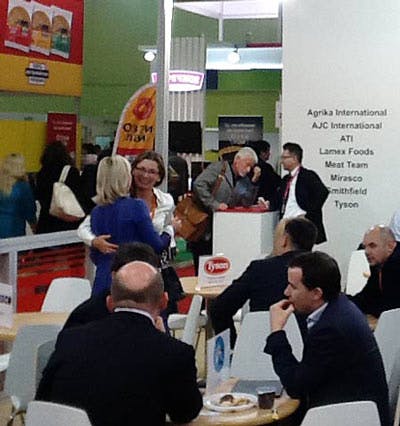Despite Barriers, Buyer Interest Remains Strong at Worldfood Moscow

Importers and distributors from Russia and the surrounding region meet with U.S. exporters and traders at WorldFood Moscow
While the Russian market is closed to U.S. beef and to most U.S. pork products, buyers at this week’s Worldfood Moscow trade show were still eager to meet with U.S. exporters and trading companies exhibiting at the event. In addition, interest in U.S. products remains strong among buyers from other markets in the Greater Russia region that remain open to U.S. pork and beef, including Ukraine, Kazakhstan, Belarus, Georgia and Azerbaijan.
“Of course, much of the conversation at Worldfood Moscow was about the current situation in Russia and when its market restrictions might be lifted or relaxed,” said John Brook, USMEF regional director for Europe, Russia and the Middle East. “In the meantime, Russian buyers must turn to suppliers from countries not impacted by Russia’s import ban.”
Those suppliers are seeking higher and higher prices in Russia, a problem compounded by a declining Russian currency. The ruble is trading at 38 rubles per U.S. dollar – down about 12 percent in the past two months and even lower than during the global financial crisis. In March 2009, the ruble bottomed at 36 rubles per U.S. dollar.
“This has resulted in very significant price rises at the retail level in Russia, making the situation more and more difficult for consumers,” Brook explained. “Resistance by importers to demands for further price increases could result in a slowdown of meat purchases from South American suppliers.”
USMEF’s exhibit space at Worldfood Moscow was funded through the USDA Market Access Program (MAP).
